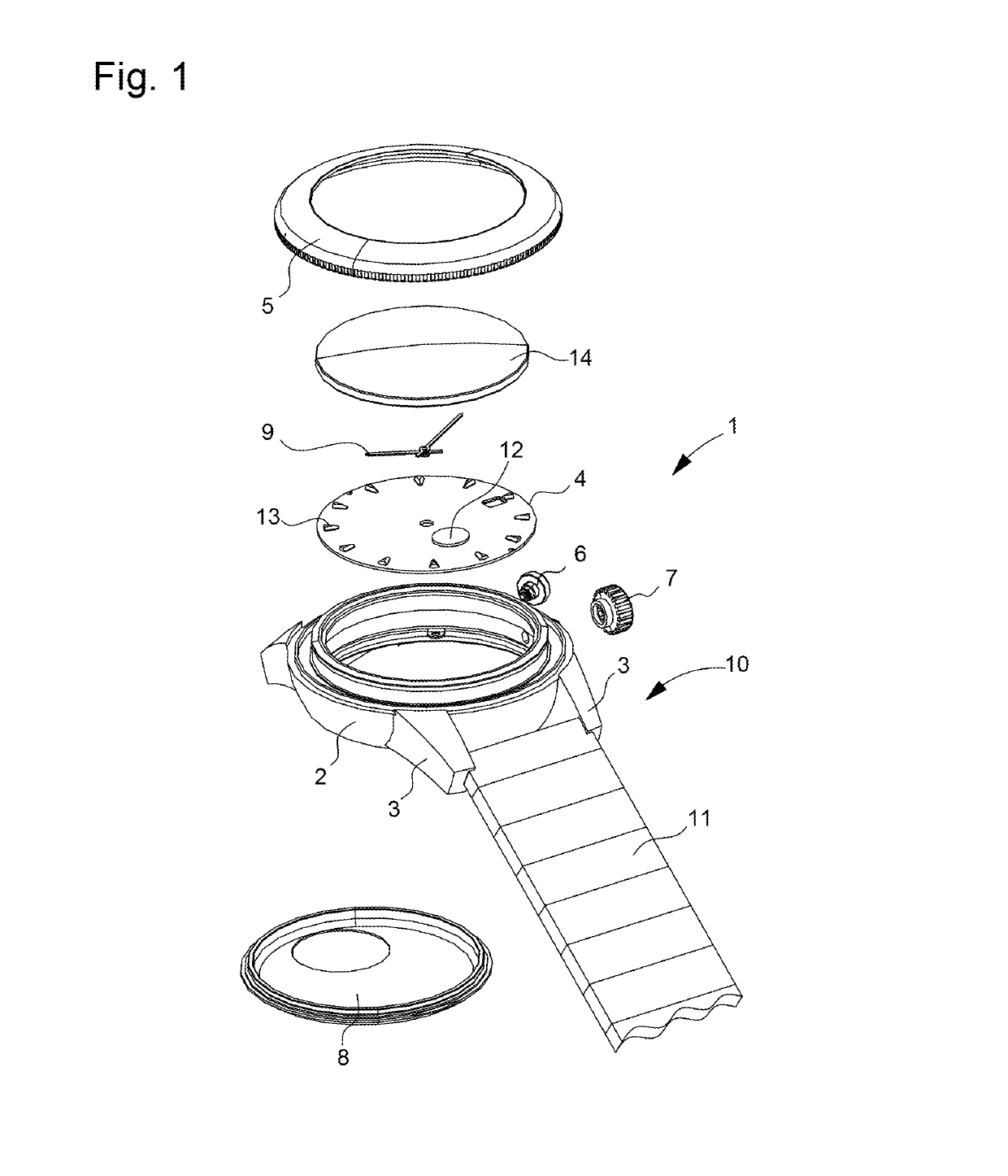Method for fabrication of a composite part
a composite component and manufacturing method technology, applied in the field of composite component fabrication, can solve the problem that the components obtained by the compacting process always have such cohesion defects, and achieve the effect of fewer implementation steps
- Summary
- Abstract
- Description
- Claims
- Application Information
AI Technical Summary
Benefits of technology
Problems solved by technology
Method used
Image
Examples
Embodiment Construction
[0028]As explained above, the invention relates to a metal-ceramic composite component. This composite component was devised for applications in the field of horology, such as for example, the external parts of a timepiece. Naturally, the composite component according to the invention is not limited to the external parts of a timepiece and more generally to horology. Thus, in a non-limiting manner, it is also possible to envisage that this composite component could be applied in the field of tableware, cutlery or jewellery.
[0029]By way of non-limiting example and with reference to FIG. 1, the composite component can form, in particular, all or part of a case 1, such as the case middle 2 and horns 3, a dial 4, a flange, a bezel 5, a push-piece 6, a crown 7, a case back cover 8, a hand 9, a bracelet or strap 10 such as a link 11, a decoration 12, an applique 13, a crystal 14 or a clasp.
[0030]The invention also relates to a method for fabrication of a composite component. The method in...
PUM
| Property | Measurement | Unit |
|---|---|---|
| Volume | aaaaa | aaaaa |
| Shrinkage | aaaaa | aaaaa |
Abstract
Description
Claims
Application Information
 Login to View More
Login to View More - R&D
- Intellectual Property
- Life Sciences
- Materials
- Tech Scout
- Unparalleled Data Quality
- Higher Quality Content
- 60% Fewer Hallucinations
Browse by: Latest US Patents, China's latest patents, Technical Efficacy Thesaurus, Application Domain, Technology Topic, Popular Technical Reports.
© 2025 PatSnap. All rights reserved.Legal|Privacy policy|Modern Slavery Act Transparency Statement|Sitemap|About US| Contact US: help@patsnap.com

